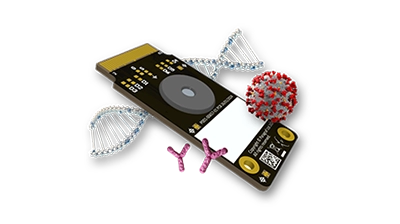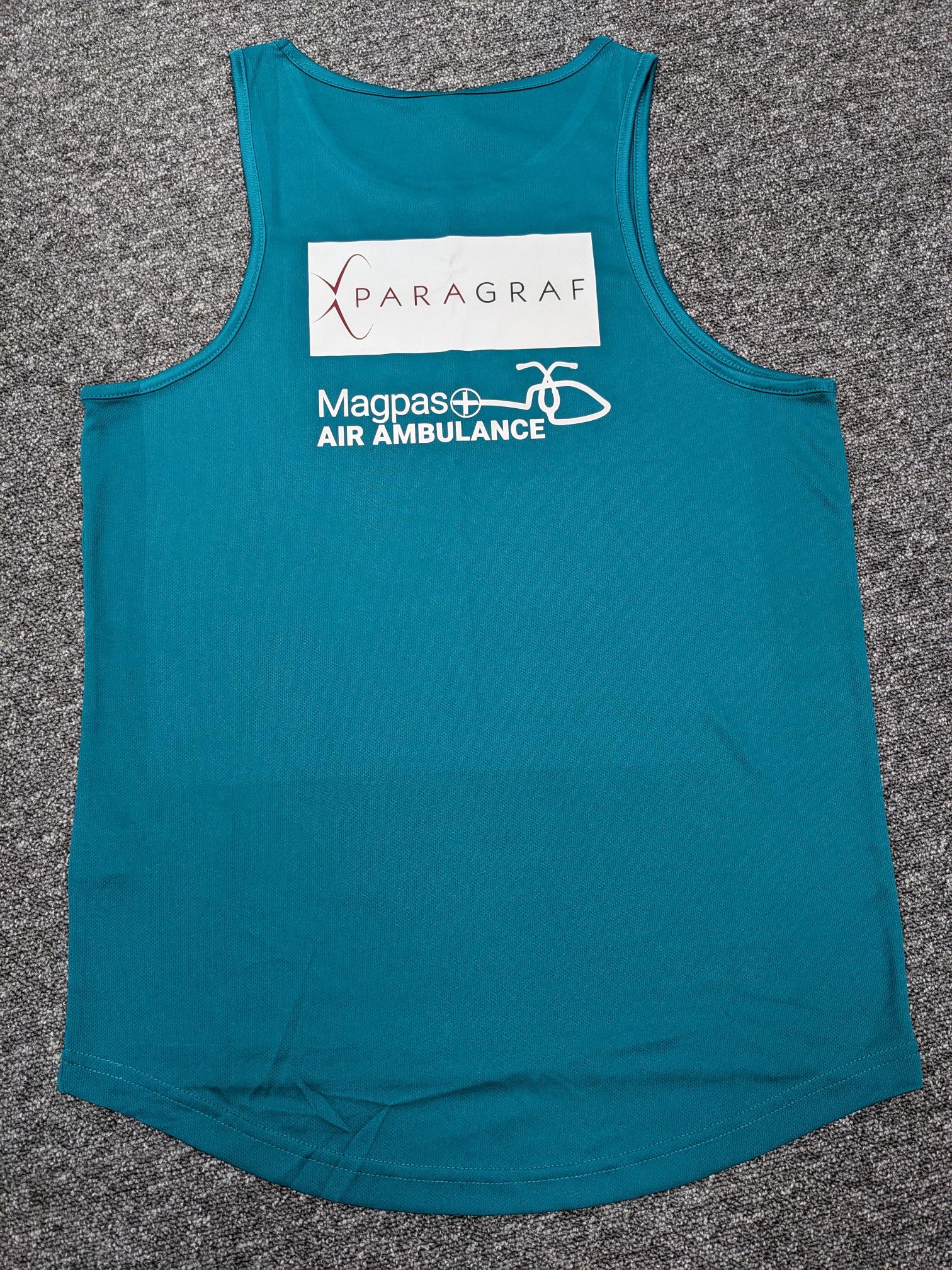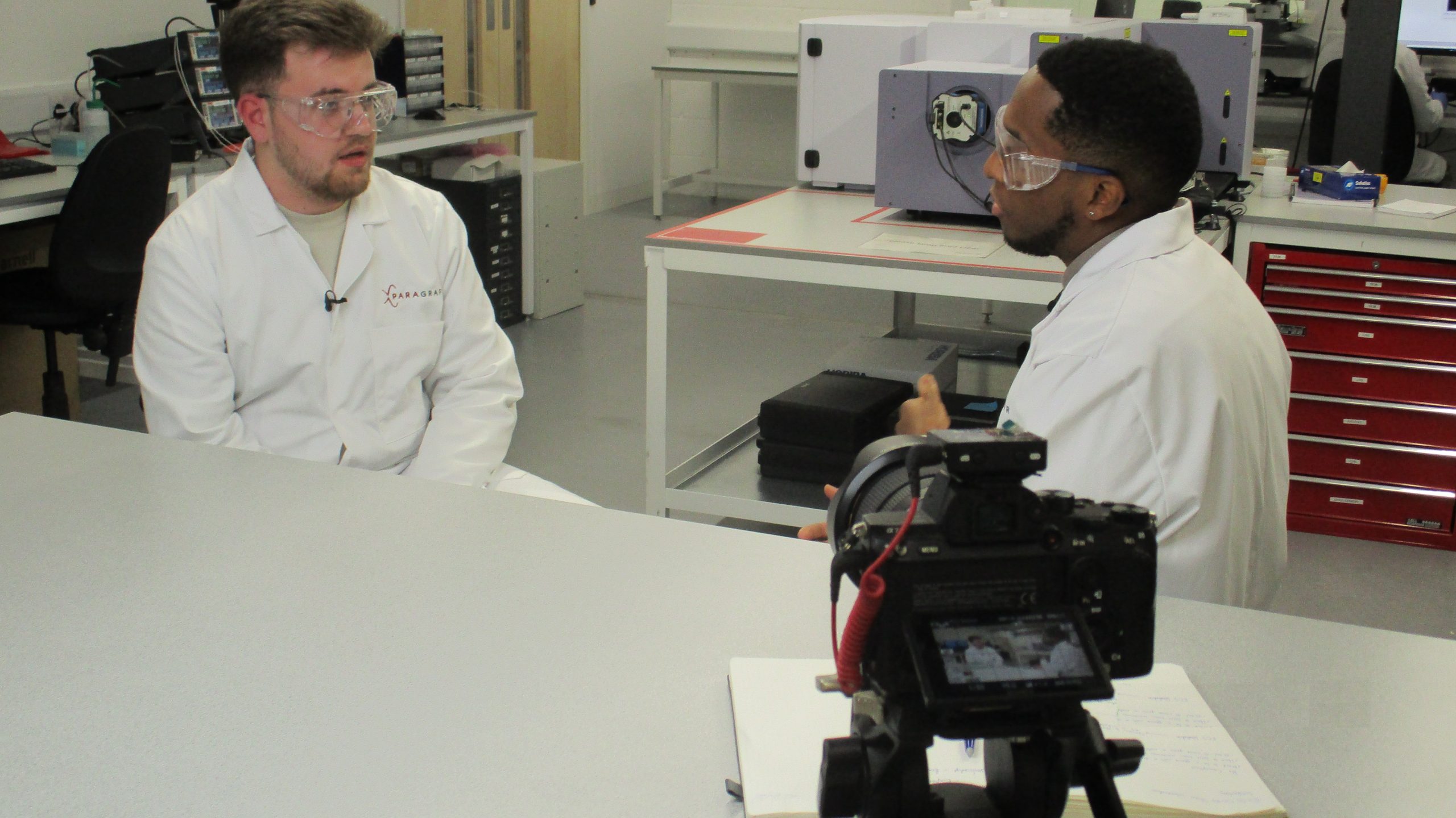First Published 26th January 2021.
An increasingly significant limitation of conventional Hall sensors is their inability to be used at cryogenic temperatures. This is largely due to the electronic components involved not functioning at these extremes and the changes in adhesion (because of thermal mismatch) between multiple material interfaces causing thermal drift.
Taking advantage of the unique properties of graphene, Paragraf graphene Hall sensors are the first Hall sensors to overcome these challenges and provide accurate, repeatable measurements at cryogenic temperature extremes.
The operating challenges posed by cryogenic temperature environments are overcome as graphene Hall sensors are thermally stable and are architecturally simple devices having limited material interfaces resulting in high performance at wide operating temperatures. High sensitivity means only nA of current are needed – representing only picowatts of power dissipation – up to 6 orders of magnitude less than even other cryogenic magnetic sensors. This prevents thermal disturbance during ultra-low temperature operation – theoretically down to mK temperatures.
Other attributes include a wide field measurement range with high sensitivity (amplification not required) with low carrier concentration; robustness including strength and resistance to thermal and electrical shock and radiation tolerance; low noise leading to high carrier mobility; their ease of calibration giving repeatable linearity and temperature coefficient with simple polynomial fit for non-linearities.
This article presents results of preliminary testing at cryogenic temperatures.
Field Range and Linearity
This graph shows the results of high field testing at room temperature. Results showed that high field sensing is possible at field strengths >9 T and that the signal remains strong at high fields.
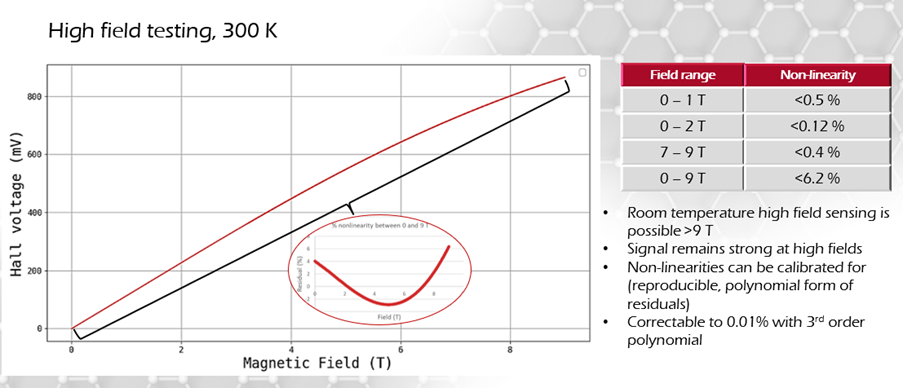
Low Temperature Operation
These results show the sensitivity from 1.8 K to 300 K. As can be seen there was a significant increase in sensitivity upon cooling. The response was repeatable, enabling coefficients to be calibrated out, with no degradation. This ongoing work focusses on repeatability and temperature cycling.
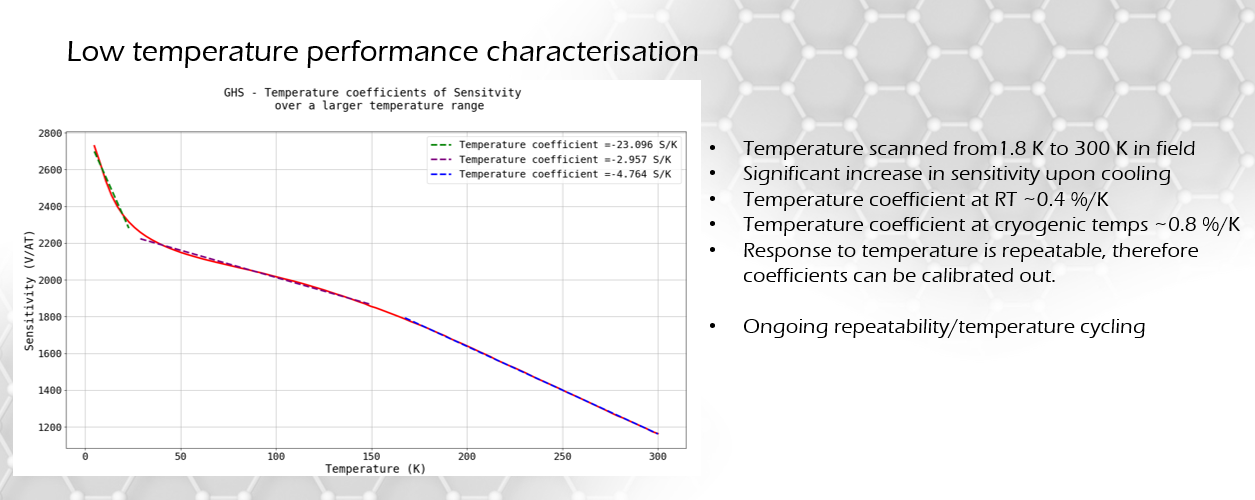
Field Range at Low Temperatures
These results show the performance of the device at low fields – the same magnetic field sweep (-1 to 9 T) at various temperatures, all below 50K. Very high sensitivities were obtained all the way up to 5 T, showing that this sensor can be used at cryogenic temperatures to accurately calibrate or map a magnet.
The Hall voltage response starts to plateau at higher fields. This happens at specific resistance values corresponding to the Quantum Hall Effect (QHE). This is a strong endorsement of the quality and purity of Paragraf’s graphene, since the purer the graphene the lower field onset at which the QHE would kick in.
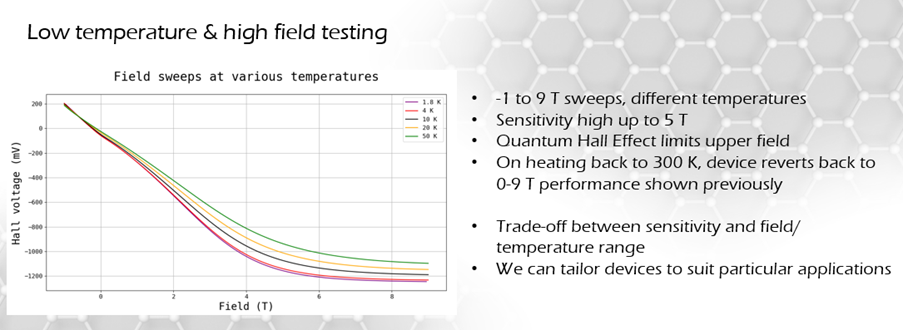
Precision and Repeatability
One of the most important things about these measurements is the repeatability. The graph on the left shows 6 of these field sweeps overlaid showing no visible difference between them. The right-hand graph shows the difference between the first and last sweep is only in the micro T range.https://www.paragraf.com/wp-content/uploads/2021/01/magneticmeasurementprecisionandrepeatability.png
Resolution
These results show that sub-ppm resolution is achieved at room temperature, orders of magnitude better than conventional Hall sensors whilst retaining ease of use and versatility. We expect this to increase even further down in cryogenic temperatures. As you go down in temperature the sensitivity increases whilst the thermal noise decreases, leading to the resolution improving even further. Our models predict a 10 ppb resolution on a 1 T field at 1.8 K.
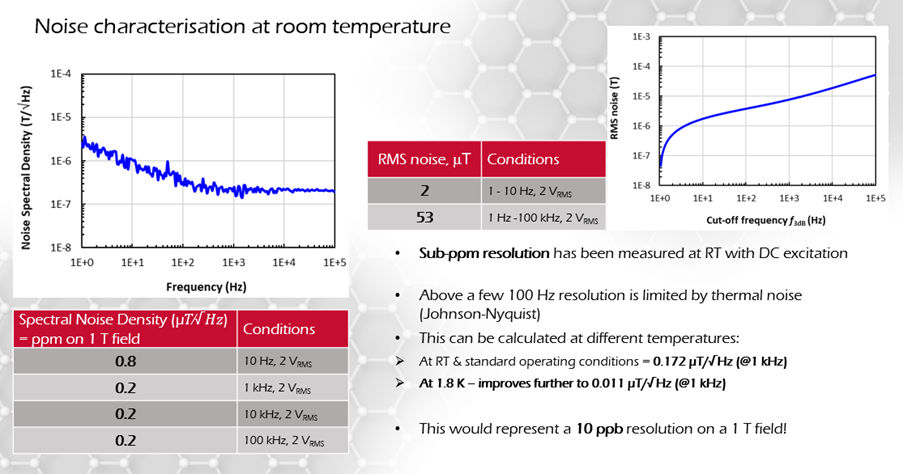
Conclusion
Paragraf’s graphene Hall Effect sensors are the only Hall Effect sensor to offer accurate, repeatable performance at cryogenic temperatures.
With respect to the QHE, there is a notable sensitivity-field range trade-off. Our models predict that the onset of the QHE can be pushed out to much higher fields by reducing the sensitivity of the device and our tests so far have validated these models. Since Paragraf can tailor its graphene, these lower sensitivity devices can be developed, paving the way for the development of a mK and high field capable GHS variant.
Applications include:
- Magnet R&D and manufacture
- Mapping of superconducting magnets – direct in cold bore (no room temperature insert required).
- Accurate magnet calibration at cryogenic temperatures (e.g. for superconducting magnets or in magnets employing cryocooled inserts for ultra-low temperature research).
- Monitoring of persistent mode magnet drift.
- In-situ magnetic field monitoring and field magnitude and vector verification during cryogenic experiments
- Built into superconducting magnet coils (active or persistent mode).
- Built into superconducting magnet or dilution fridge inserts.
- Built into cryocooling equipment, e.g. dilution fridges.
- Built onto sample stages designed for cryogenic use.
- Built into vector magnet bores and dilution fridge inserts or sample stages specific to vector magnets.
- Magnetic shielding attenuation factor determination – use the same sensor for field measurement on the inside and outside of the shield
- To characterise shielding of superconducting magnets.
- To characterise magnetic shielding composed of superconducting material.



